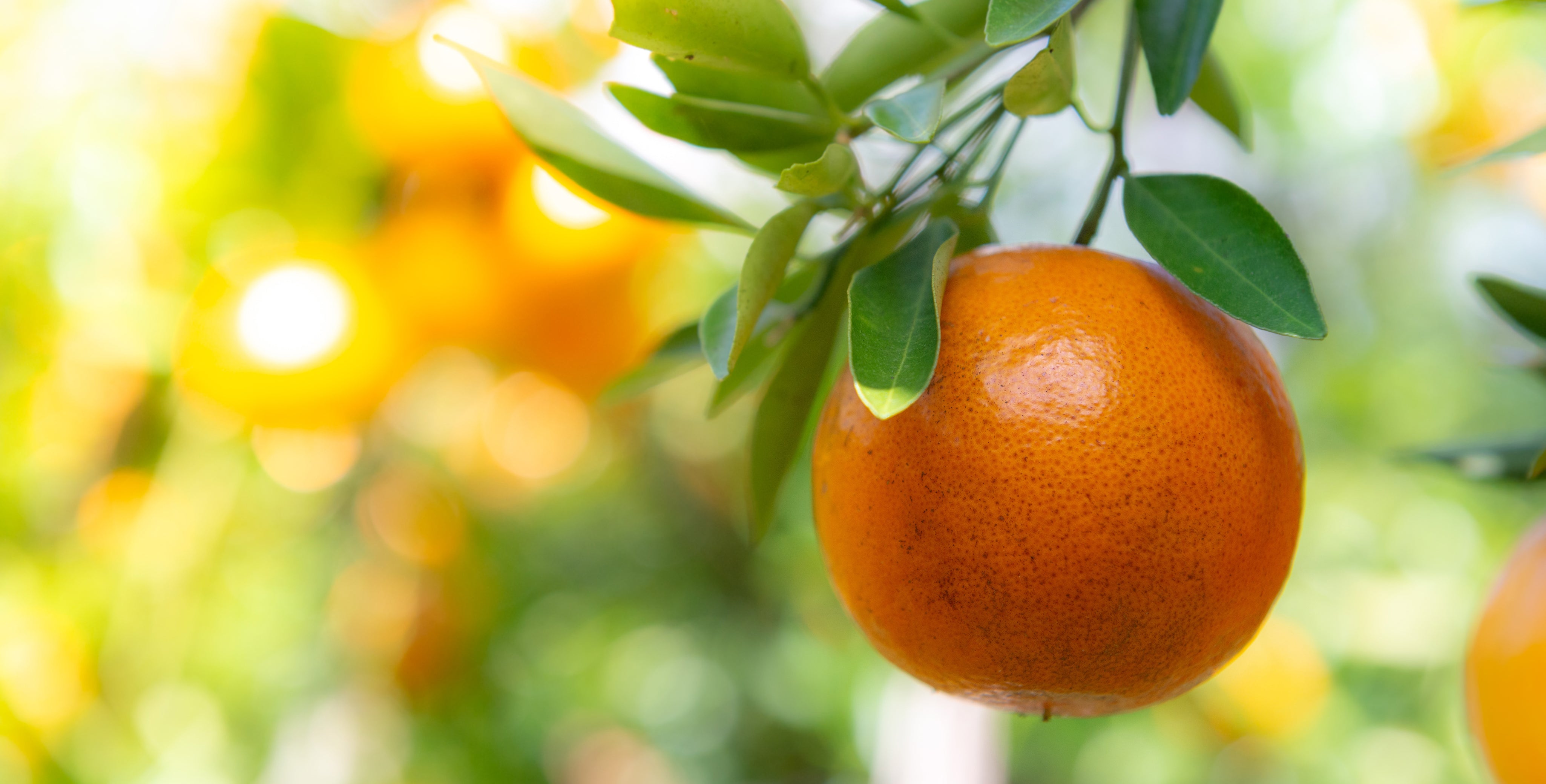Round thing - organic cultivation of grapefruit

A fresh citrus scent wafts between the grapefruit trees, on which the yellow-orange-pink fruits hang plump and round. The sun shines bright and warm from a cloudless sky and every now and then a pheasant cry can be heard. Rafo has invited us to his plantation. Here, in the Andalusian province of Cadiz, he grows organic grapefruit for us on 40 hectares of land, which we need for our classic product, CitroPlus® grapefruit seed extract. Rafo is one of our suppliers of raw materials for CitroPlus® and, like his colleague, agricultural engineer Mario, is a firm believer in organic farming.
Organic: as smart as a fox, gentle on the environment
In return, they accept 50 percent higher costs compared to conventional cultivation. The reasons for the additional costs are manifold, starting with fertilization and pest control and ending with transport. Instead of working with chemical pesticides, Rafo and Mario get help from nature: rodents, which nibble at the roots of the trees and thus endanger the entire grapefruit tree, are driven away with the help of foxes. Neem oil is used against harmful insects. Sustainable cultivation also means using water as sparingly as possible. The plantation is well supplied with water thanks to its proximity to the river and a well. However, summers in Spain are getting hotter and drier - climate change is clearly noticeable here and water is becoming an increasingly valuable resource.
In addition to the water-saving drip irrigation system, in which water is delivered precisely to the plant as required through holes in the hoses, Mario has also come up with something new. His "playground", as he calls it with a grin, is a test field with different avocado varieties. The fruit, which is so popular in Europe, has come under fire in recent years for being ecologically questionable due to the long import routes and high water consumption. Spain is so far one of the few European countries where avocado cultivation has been successful. This means that transportation routes can be shortened considerably - but what about water consumption during cultivation? Marco uses an ingenious irrigation system in which the plants are sprayed with a fine mist from above on a time-controlled basis during periods of greater demand. The initial successes are promising.
The plantation as a center of life for 150 people
The curiosity and innovative strength as well as the high quality standards of their own products make the collaboration with Marco and Rafo particularly enjoyable and valuable. Their responsible attitude is also evident in the way they treat their employees, as the plantation is much more than just a cultivation area. A total of 5500 hectares of land are cultivated, but the entire site is much larger. For the 150 employees and their families, this place is the center of their lives, they live and work here, and there is even a small school where 13 to 20 children are taught. During the harvest season, around 800 additional employees from the region are deployed every year, most of whom are always the same.
Harvest good, everything good
The grapefruit harvest begins in mid-October and ends in May. It has to be cold at night so that the fruit can develop its beautiful color during the day. As its name grapefruit suggests, the grapefruit grows in bunches on the tree. The fruits grow to an average size of 10 to 15 cm. The compact trees have dense, dark green foliage, some of which reaches down to the ground like an umbrella. Marco plucks a grapefruit from the tree, cuts it open with his penknife and lets us taste it. They are incredibly juicy and taste incomparably fresh, their aroma is impressive.
The fruit sugar content indicates whether the fruit is ripe. This is important for the time of harvest, because unlike bananas, for example, citrus fruits do not ripen after harvesting. If they are harvested too early, they taste sour and not very aromatic. Unlike conventional fruit, organic grapefruit must not be preserved. Without preservatives, ripe fruit will keep for two weeks, which means that organic cultivation also places higher demands on logistics.
A tip when buying grapefruit: Make sure the fruit is firm and heavy, it should give a little when pressed. We recommend storing them in a dry place at room temperature. They taste wonderful on their own and with both sweet and savory salads or desserts. Grilling grapefruit sounds unusual, but it is extremely delicious because grilling brings out the sweetness of the grapefruit. Grapefruit also harmonizes perfectly with seafood, especially with sweet and nutty shellfish and avocado. Salads that have a slightly bitter note also go perfectly with grapefruit.
And our recipe for CitroPlus®? Sorry, but that remains our little secret.




